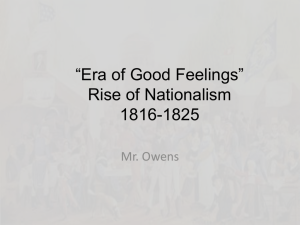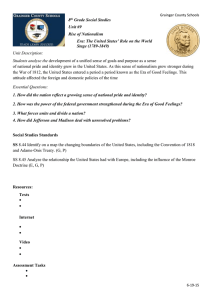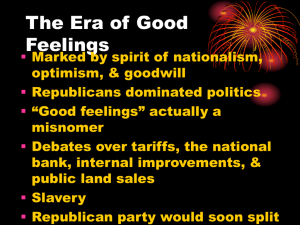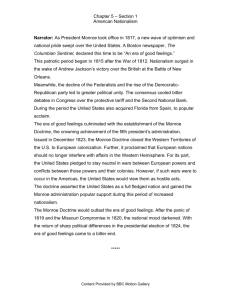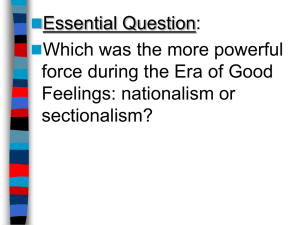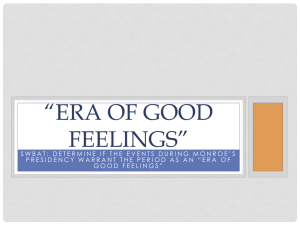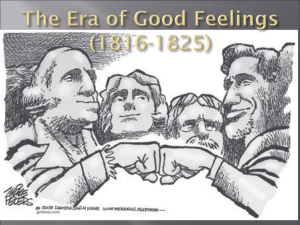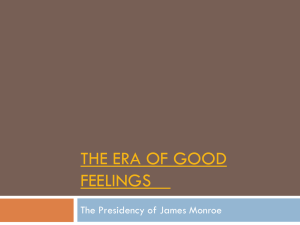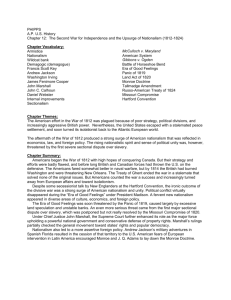James Monroe and the Era of Good Feelings (1816-1825)
advertisement
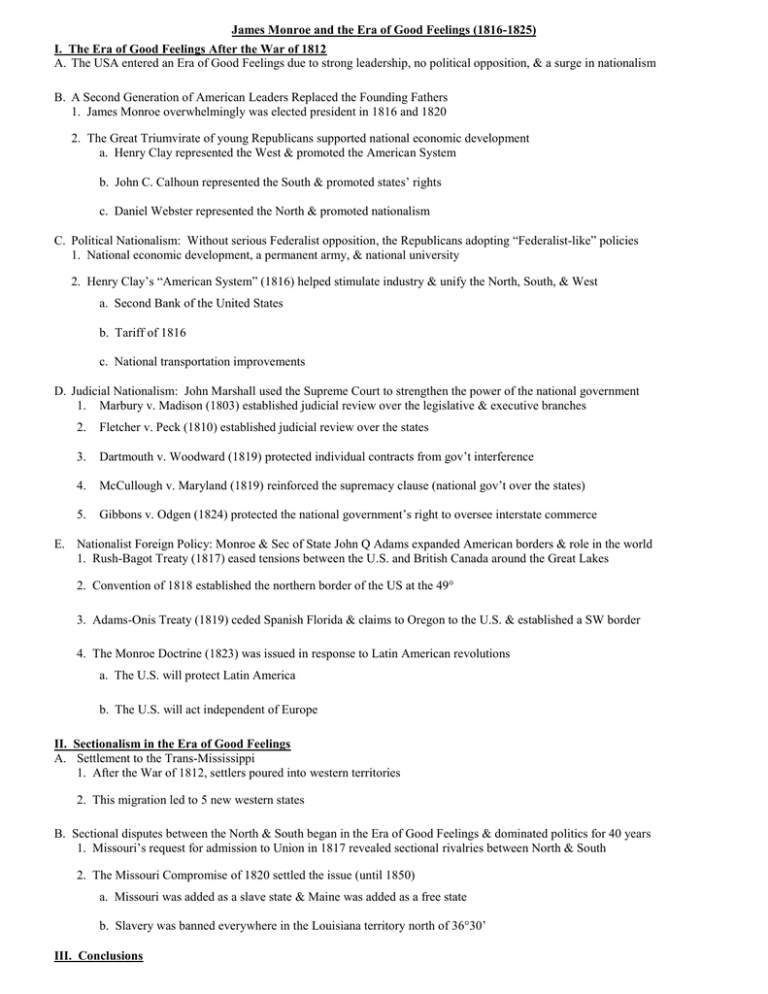
James Monroe and the Era of Good Feelings (1816-1825) I. The Era of Good Feelings After the War of 1812 A. The USA entered an Era of Good Feelings due to strong leadership, no political opposition, & a surge in nationalism B. A Second Generation of American Leaders Replaced the Founding Fathers 1. James Monroe overwhelmingly was elected president in 1816 and 1820 2. The Great Triumvirate of young Republicans supported national economic development a. Henry Clay represented the West & promoted the American System b. John C. Calhoun represented the South & promoted states’ rights c. Daniel Webster represented the North & promoted nationalism C. Political Nationalism: Without serious Federalist opposition, the Republicans adopting “Federalist-like” policies 1. National economic development, a permanent army, & national university 2. Henry Clay’s “American System” (1816) helped stimulate industry & unify the North, South, & West a. Second Bank of the United States b. Tariff of 1816 c. National transportation improvements D. Judicial Nationalism: John Marshall used the Supreme Court to strengthen the power of the national government 1. Marbury v. Madison (1803) established judicial review over the legislative & executive branches 2. Fletcher v. Peck (1810) established judicial review over the states 3. Dartmouth v. Woodward (1819) protected individual contracts from gov’t interference 4. McCullough v. Maryland (1819) reinforced the supremacy clause (national gov’t over the states) 5. Gibbons v. Odgen (1824) protected the national government’s right to oversee interstate commerce E. Nationalist Foreign Policy: Monroe & Sec of State John Q Adams expanded American borders & role in the world 1. Rush-Bagot Treaty (1817) eased tensions between the U.S. and British Canada around the Great Lakes 2. Convention of 1818 established the northern border of the US at the 49° 3. Adams-Onis Treaty (1819) ceded Spanish Florida & claims to Oregon to the U.S. & established a SW border 4. The Monroe Doctrine (1823) was issued in response to Latin American revolutions a. The U.S. will protect Latin America b. The U.S. will act independent of Europe II. Sectionalism in the Era of Good Feelings A. Settlement to the Trans-Mississippi 1. After the War of 1812, settlers poured into western territories 2. This migration led to 5 new western states B. Sectional disputes between the North & South began in the Era of Good Feelings & dominated politics for 40 years 1. Missouri’s request for admission to Union in 1817 revealed sectional rivalries between North & South 2. The Missouri Compromise of 1820 settled the issue (until 1850) a. Missouri was added as a slave state & Maine was added as a free state b. Slavery was banned everywhere in the Louisiana territory north of 36°30’ III. Conclusions
